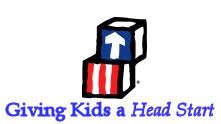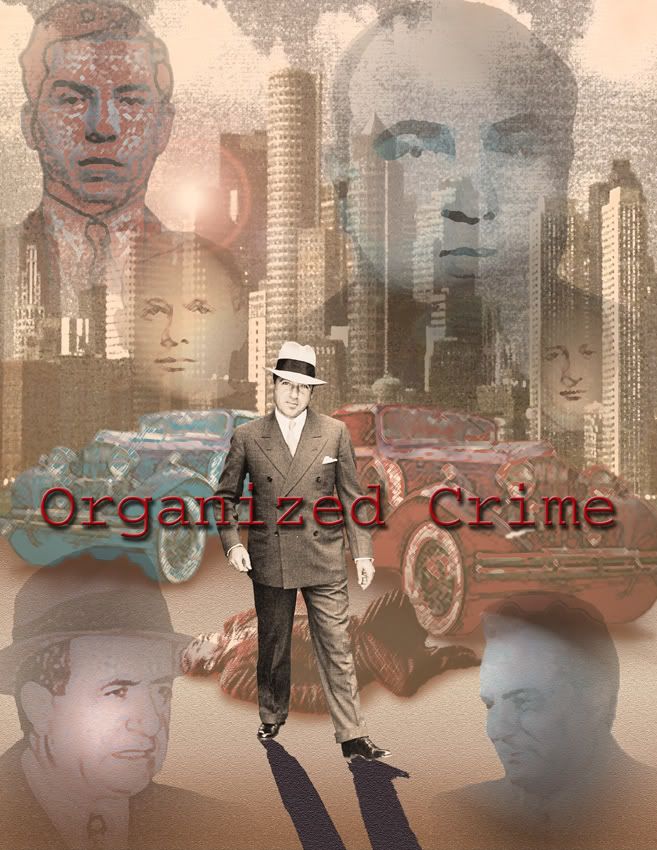Many have difficulties understanding why juveniles participate in criminal activities and assessing the multiple potentials of contributing facors that lead to frustration. However, if communities focus on the ecological and social crime theories (social bonds, cultural transmission and leared behavior) more opportunities can be avialable for targeting juvenile delinquency. These theories produce the belief that criminal activities are a result of behavior that derives from friends, family, or other influences in the juvenile's life.
Another theory proposes that juvenile delinquency derives from society and the way environmental factors dictate a state of mind. One example is soociety's obsession with obtaining wealth - this encourages everyone to take part in the game - but restricts juvenile opportunities to accomplish this goal - forsing the potential offender to resort to ways outside normality's to achieve wealth. Similar to the individual psychological theory that suggests that the offender is "shortchanged" (lack of opportunities throughout youth) and resorts to delinquency to "even the odds".
The first program to address crime causation and diversion, evaluated in this post, is the National Head Start Association and the second program is the Big Brother and Big Sisters Program. The motivation behind the National Head Start Association is to provide lower income famillies with a school readiness program, targeting children ages two through five, which offers comprehensive resources for education, health, nutrition, for both the parent(s) and child (National Head Start Association [NHSA], 2010). Located on another spectrum, targeting older children, is the Big Brother and Big Sisters program, which offers mentoring for ages seven trhough 16 with services focusing primarily on single-parent homes. Together these programs address different age groups and can significantly improve the potential outlook for a community.

"Simple comparisons between children in poor families and children in non-poor families using national datasets indicate that poor chidlren are more likely to do worse on indices of school achievement than non-poor children are" (Brady-Smith, Fauth & Brooks-Gunn, n.d., para. 4). The statistics are alarming, especially considering that these children are "... 1.4 times as likely to be identified as having a learning disability...than their non-poor counterparts" (Brady-Smith et al., n.d., para. 4). Therefore, the Head Start program directs their attention toward lower income famillies and uses curriculum and assessment program to ensure that all "activities are developmentally appropriate to meet each child's need" (Southern Maryland Tri-County Community Action Committee, Inc. Head Start Program [SMTCCAC, Inc. Head Start], n.d., para. 2).
"...[E]vidence suggests that the early years may be a critical period of development in which family poverty has particularly strong effects on young children" (Brady-Smith et al., n.d., para. 7). Nevertheless, the Head Start program also offers ofther resources that benefit under privileged families. Each center has a center manager and a Family Service Provider that works closely with the Head Start program, which allows him or her to offer guidance to parents in further their education, and additional calsses in "...areas such as child rearing, job training, health and nutrition, and tapping into available community resources" (SMTCCAC, Inc. Head Start, n.d., para. 2).
One of the key elements that make the Head Start Program so successful is the ability to provide a cooperation agreement with imporant dynamics of the community. This provides the children enrolled in the Head Start program with more than just a jump start to education, but allows "skilled professionals to work with families to assure that vision and hearing testing, dental, immunizations and other physical & mental needs of children are met" (SMTCCAC, Inc. Head Start, n.d., para. 2). Whereas, without the Head Start program, parents may not be able to afford or even have the knowledge that certain medical and dental needs are neccessary. The Head Start program does notjust offer these services on a quarterly basis, but rather emphasize the importance of proper physical health and hygience in the classroom throughout the year.
No family or child is left behind with the Head Start program, which also promises to "build ]upon [sic] strengths and eliminate [sic] weaknesses to attain self-sufficiency and other goals related to family stability" (SMTCCAC, Inc. Head Start, n.d., para. 2). The Head Start program offers outstanding education and resources throughtout the community, but most important, gives the child and parent(s) optimism for their future. Without this program parents are mroe prone to depend on others to raise their children, have an acute understanding of the mental, emotional, and physical needs of their child, and the potential to continue living in poverty.
On January 11, 2010 a popular Fox network, morning news, featured Mentoring Monday campaign expressing to the community that simply lending a little "timee, attention, help with homework, [or] just being there as a friend" can make a positive difference in the youths lives. Many participating organizations were available through a phone bank, accepting new and eager volunteers. One of the featured organizations was the Big Brother and Big Sisters of the National Capital area, as the longest running and successful program.
news, featured Mentoring Monday campaign expressing to the community that simply lending a little "timee, attention, help with homework, [or] just being there as a friend" can make a positive difference in the youths lives. Many participating organizations were available through a phone bank, accepting new and eager volunteers. One of the featured organizations was the Big Brother and Big Sisters of the National Capital area, as the longest running and successful program.
 news, featured Mentoring Monday campaign expressing to the community that simply lending a little "timee, attention, help with homework, [or] just being there as a friend" can make a positive difference in the youths lives. Many participating organizations were available through a phone bank, accepting new and eager volunteers. One of the featured organizations was the Big Brother and Big Sisters of the National Capital area, as the longest running and successful program.
news, featured Mentoring Monday campaign expressing to the community that simply lending a little "timee, attention, help with homework, [or] just being there as a friend" can make a positive difference in the youths lives. Many participating organizations were available through a phone bank, accepting new and eager volunteers. One of the featured organizations was the Big Brother and Big Sisters of the National Capital area, as the longest running and successful program.Operating since 1950, the Big Brother and Big Sisters is a mentoring program that helps build positive relationships and provides a role model that may prevent the juvenile from committing criminal activities. "LITTLES that meet with their BIGS on a regular basis are 46% less likely to begin using illegal drugs [and] 27% less likely to begin using alcohol" (Big Brother, Big Sisters [BBBS], 2007, para. 1). Juveniles participating in the program tend to show more trust toward their parents, and also feel mroe supported and less criticized by their peers.

Mentoring takes a considerable amount of time, patience, and willingness to build trust. However, to be a part of the Big Brothers and Big Sister program all the individual needs to have is the determination, the willingness to be a friend, but most of all someone who cares. With these simple requirements, almost anyone can have the power that makes a difference, not only in the children's lives, but lives of others as well. "Our BIGS consistently say that they get even more out of their friendship than the LITTLES, and our LITTLES grow into adults who want to be involved themselves and help another child" (BBBS, 2007, para. 4).
Over the past 30 years, statistics show parallels between the increase in crime and families abandoned by fathers (Fagan, 1995, para. 3). Chidlren of single parent homes tend to have more needs than children from families which both parents are present. Especially children with parents that are curently in prison or battling divorce tend to experience a substantial amount of loss. Challenges they may have to face include self-esteem, learning to cope with challenges, and understanding that their behavior does not have to reflect their parent's decisions. These children need mentors that can be there and consistently are a part of the children's lives to make a positive difference.
The Big Brother and Big Sisters program goals are to provide mentors to all children in their community who need supportive and caring adult role models. This allows friendships to be made, encouraging the children to "expand their horizons, realize their potential and enrich their futures - changing their lives" (BBBS, 2008, para. 1). If a mentor can make a difference in one life, think about all the differences that can be made in the future because of that one friendship.
In conclusion, with a focus on ecological and social crime theories, communities continue to develop programs to assist the parents and children in the community. through research and analysis, programs can continue to extend to different age levels and focus on neighborhoods that may be suffering. To teach the children that even though they are not living like Paris Hilton, crime is not the way to compensate for the feeling of inadequacy, but rather to obtain equality by furthering their education and becoming more successful. mentors and role models are all around, but by creating a positive experience with the youth, they can creat a brighter future for everyone.
References
Big Brothers Big Sisters. (2007). About BBBS. Retrieved January 11, 2010, from http://www.dutchesscap.org/bigbrothersbigsisters.php
Big Brother Big Sisters. (2008). The power to change lives. Retrieved January 11, 2010, from http://www.bigsnyc.org/
Brady-Smith, C., Fauth, R.c., & Brooks-Gunn, J. (n.d.). Poverty and education - overview, children and adolescents. Retrieved January 11, 2011 from http://education.stateuniversity.com/pages/2330/Poverty-Education.html
Fagan, P.F. (1995). The real root cause of violent crime: the breakdown of marriage, family and community. Retrieved January 11, 2010, from http://www.heritage.org/Research/Crime/BG1026.cfm
National Head Start Association. (2010). About the National Head Start Association. Retrieved January 11, 2010, from http://www.nhsa.org/
Southern Maryland Tri-County Community Action Committee, Inc. Head Start Program. (n.d.). What is Head Start. Retrieved January 11, 2010, from http://www.smtccac.org/hstart/





